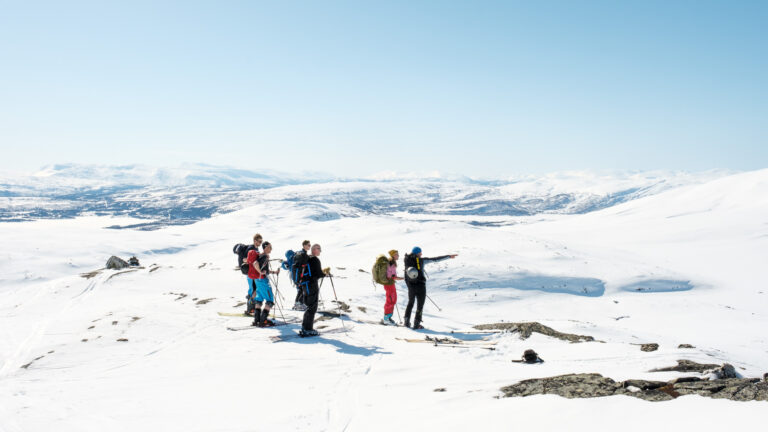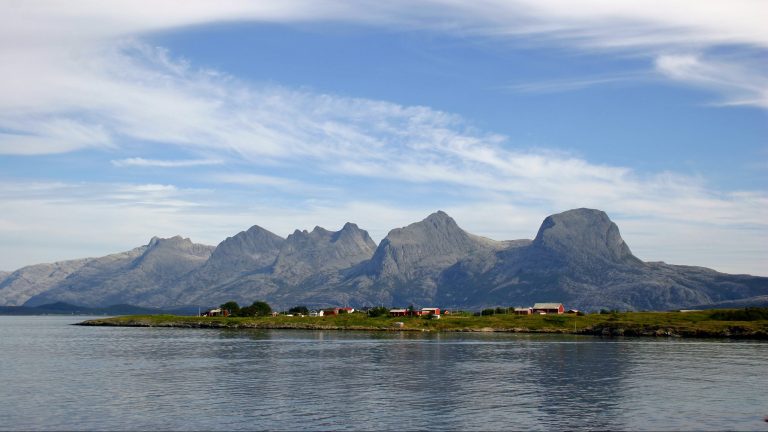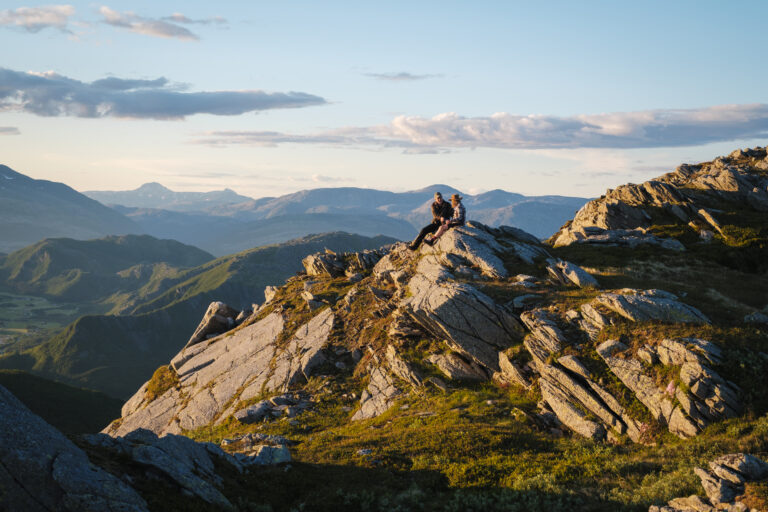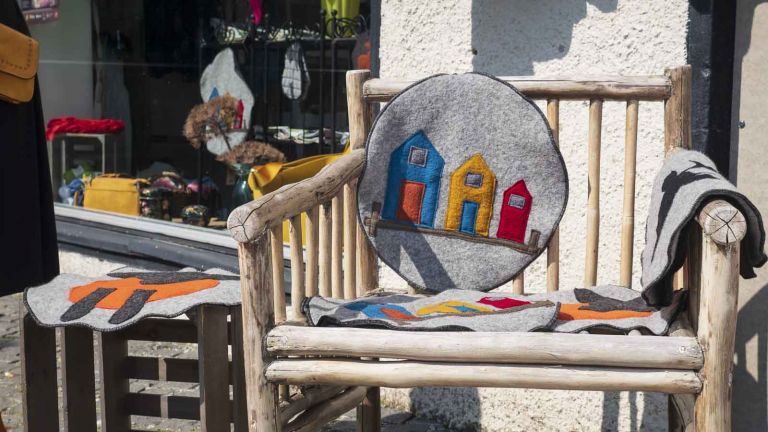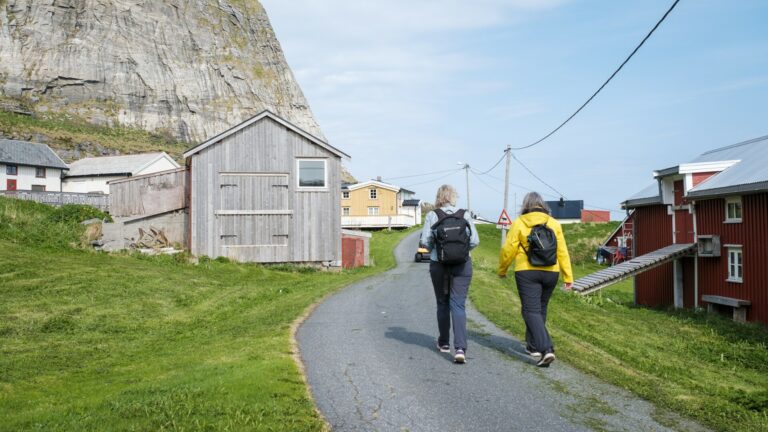A hiking adventure: Himmelbærsteinen
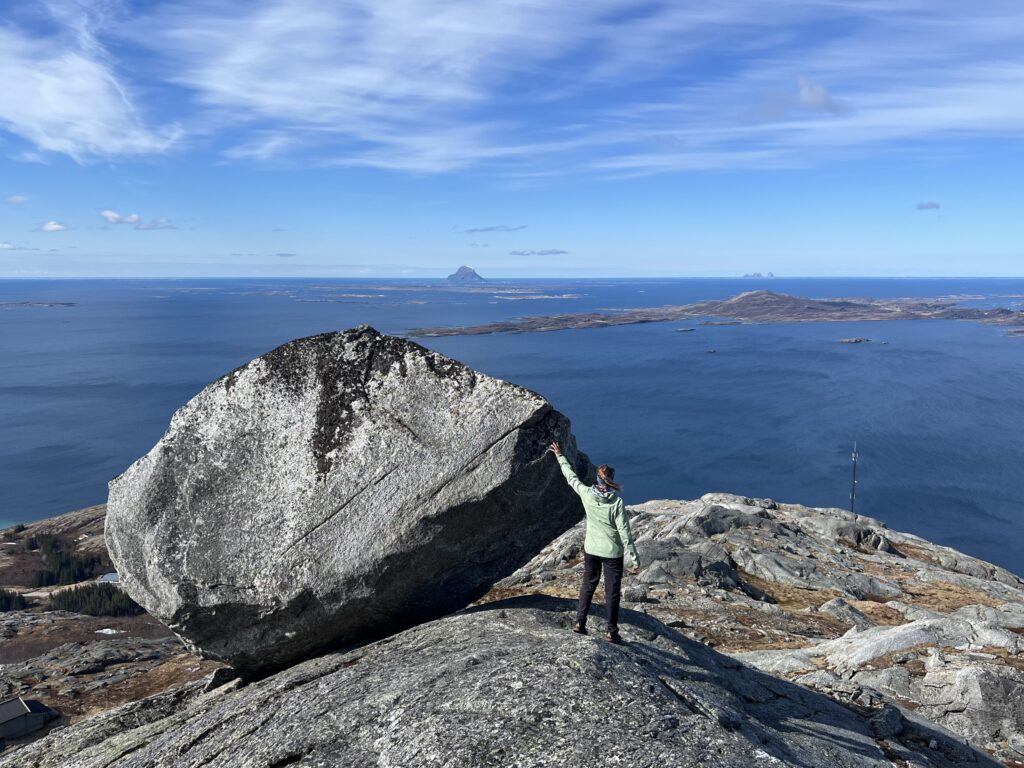 Kristin Johansen
Kristin JohansenThe hike to Himmelbærsteinen starts at the viewpoint on Kleivhalsen along the Coastal Route (Kystriksveien) in Lurøy. From the top, you’ll have a beautiful view of the islands along the Helgeland coast.
Key info
Difficulty: Medium
Distance one way: 1.5 km
Elevation gain one way: 370 metres
Time one way: 1 hour
Season: May – October
Starting point: Pull-off parking area along Fv17, 800 metres from Grønsvik Coastal Fort
Special considerations: Reindeer may be present in the area during summer
Hike description
From the parking area at Kleivhalsen, cross the Coastal Route and walk across the rocky outcrops toward the power lines. There is no marked trail, but you’ll find a visible path that leads up through the forest.
Above the tree line, you’ll pass some concrete foundations and technical installations — these are part of the Norwegian Armed Forces’ antenna and communication system.
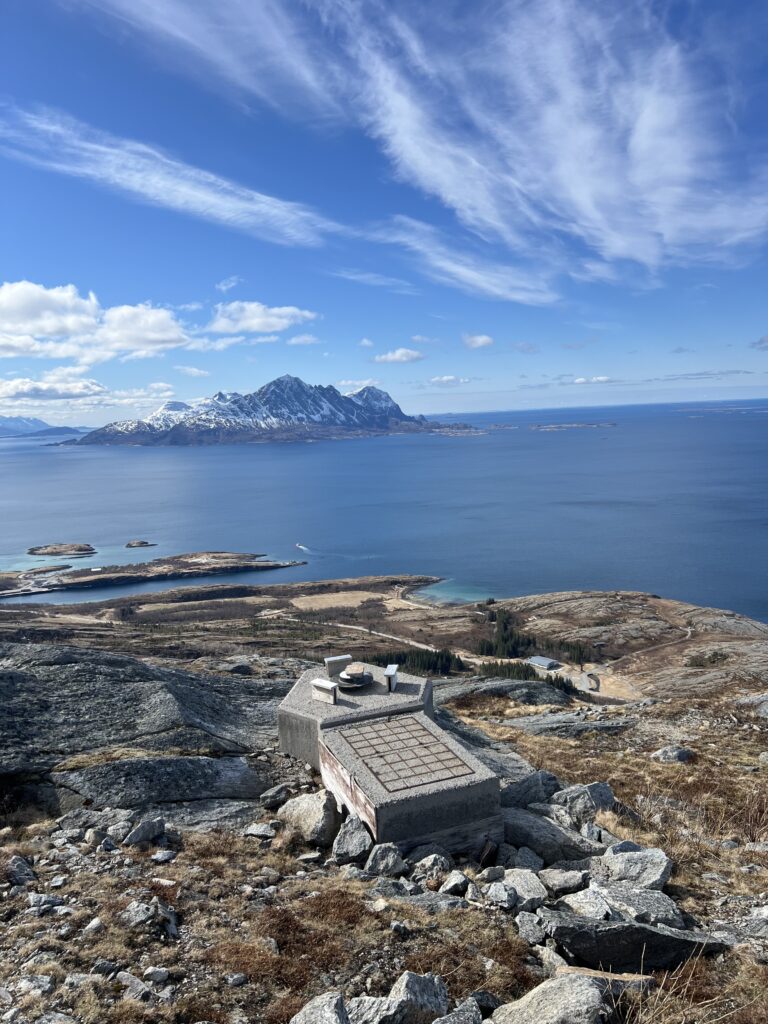 Kristin Johansen
Kristin Johansen
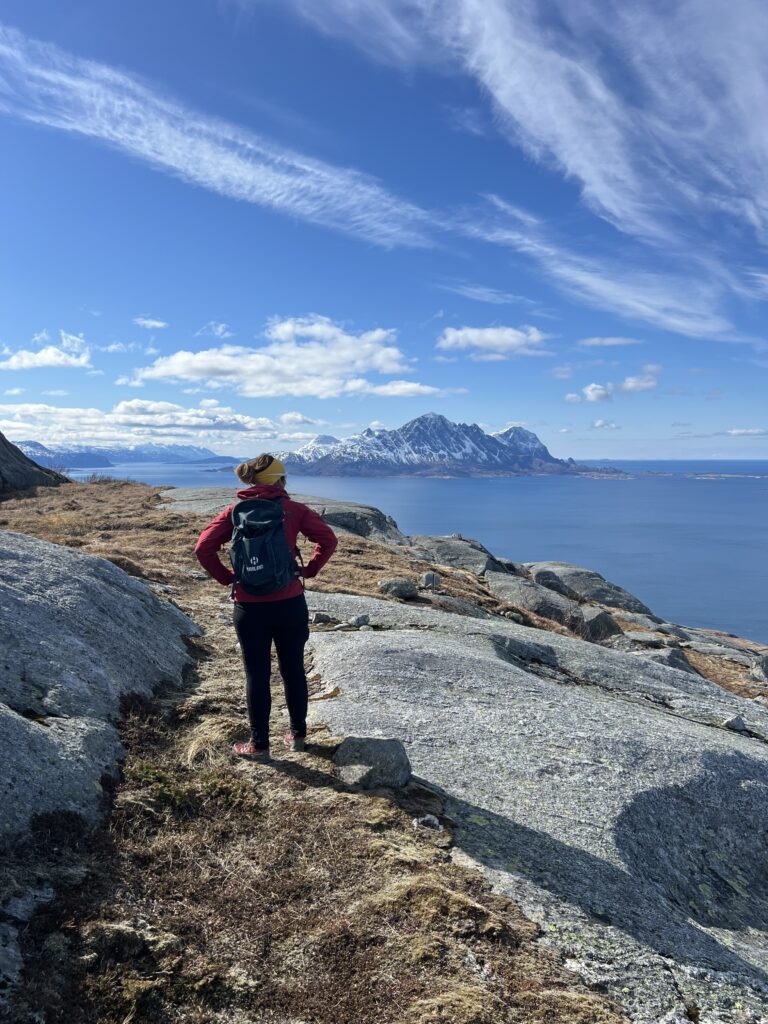 Kristin Johansen
Kristin Johansen
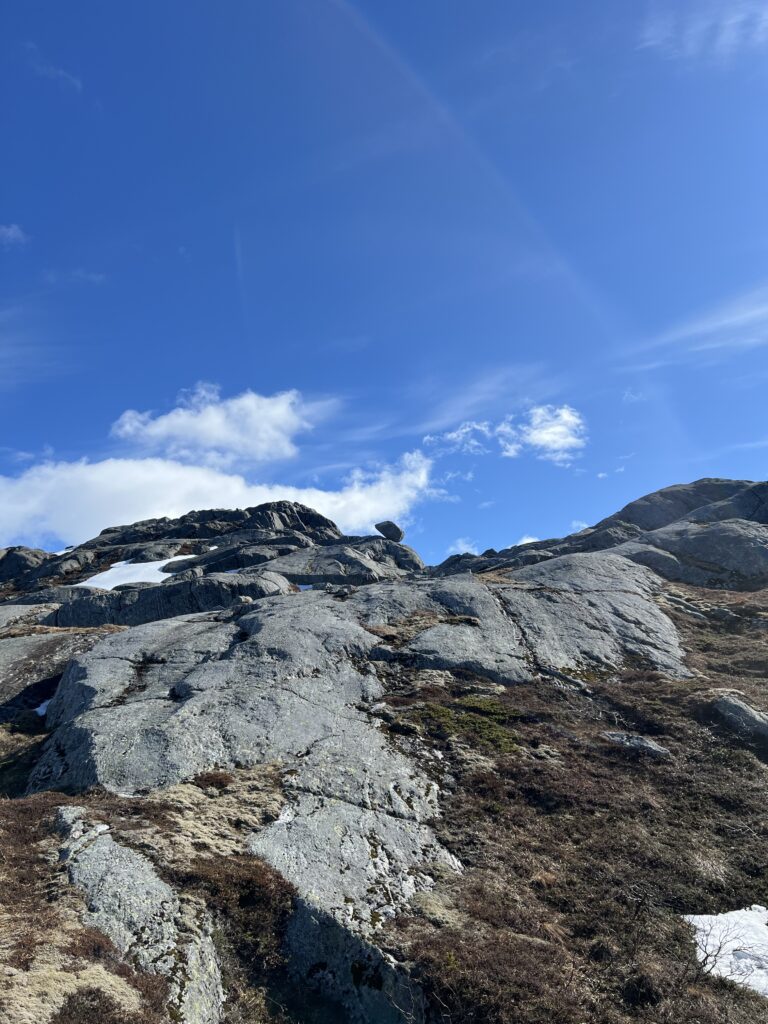 Kristin Johansen
Kristin Johansen
This hike is suitable for those comfortable navigating unmarked terrain. Be cautious in wet weather, as the rocks can become slippery.
1. Follow the Norwegian Mountain Code and plan according to your ability and equipment
Short hikes on easy terrain don’t require much. If you’re heading out for an hour or two in the lowlands and not gaining much elevation, you won’t need a lot of gear or be in top shape. If it gets cold or you get tired, you’re usually not far from your car.
But if you’re heading into more challenging terrain—steeper, rougher, and above the treeline where the weather is more unpredictable—you’ll need to be better prepared. You should plan the trip based on weather and conditions, be fit enough to complete it, and be ready for uneven ground, boulder fields, slippery roots, and stream crossings. That means carrying a heavier pack with extra clothes and gear, and wearing sturdy hiking boots that support your ankles.
If you’re unsure about taking on a demanding mountain hike, start with an easy or moderate one and see how it feels.
Learn more about the Norwegian Mountain Code at rodekors.no
See what you should bring on your hike on VisitNorway.com
2. Stick to marked trails
A shortcut through unfamiliar terrain can easily turn into a long and difficult detour. What looks like a trail might just be a sheep path that leads you somewhere completely unexpected. If you want the hike to be as easy or challenging—and as long or short—as planned, it’s best to follow marked trails.
If you’re heading off-trail, it’s smart to follow a GPS track. You can download a GPX file from a hike description and use it on a GPS device, a smartphone app, or a GPS watch.
UT.no and the UT app offer hike descriptions with GPS tracks. If your hike doesn’t have one, you can upload a track to ut.no/mine-turer and access it in the app. It’s free, but you’ll need to create an account.
Always carry a map and compass as backup.
UT app for Android / UT app for iPhone
3. Talk to locals or join a guided hike
Locals often have useful tips about your planned hike. They can tell you where to park, whether there’s phone coverage, if the trail is wet, if rivers are high, or suggest a better alternative. Talk to the people where you’re staying, at the local tourist office, or other hikers on the trail—you might get some truly valuable advice.
The best option is to hike with a guide. You can join a group tour or book a private guide. These are experienced locals who know the area well. They’ll help tailor the hike to your needs and share insights that add to the experience.
4. Look out for cultural landmarks
Even high up in the mountains, you’ll find traces of past human activity—some hundreds or even thousands of years old. These can include ancient trail markers, signal cairns, hunting fences, huts, and shepherd shelters. If you spot something interesting, check the KulturPunkt app to see what it is—or use the app to find a cultural site as your hiking goal.
KulturPunkt app for Android / KulturPunkt app for iPhone
KulturPunkt.org
5. Remember your responsibilities under the Right to Roam
Norway’s Right to Roam means you can hike, bike, pick berries, camp, fish, and ski almost anywhere in nature. But it also comes with responsibilities—what we call the “duties of the Right to Roam.” Leave no trace, respect wildlife, and know the rules for hunting, fishing, cycling, and access in protected areas like national parks and nature reserves.
Read more about the Right to Roam and your responsibilities at VisitNorway.com
Thank you for respecting the local communities, and for helping us preserve the natural beauty of Helgeland!
Please:
- Strive to leave no trace of your visit. Bring back all your rubbish, including used toilet paper, and discard it in the nearest rubbish bin.
- Plan your toilet visits and use the opportunity when you pass a toilet. In the wilderness, make sure you are not a nuisance to others.
- Respect the local wildlife. Keep a good distance from wildlife, livestock and birds. Keep your dog leashed.
- Respect private property. Keep a respectful distance from houses and cabins.
- Show good boating sense. Keep a good distance from shore and drive at a low speed, especially when you are close to anyone or anything on the water, including birds or animals. Avoid loud and disturbing engine noise. Be aware that some islands and nature reserves are important nesting sites, and that going ashore is prohibited during the nesting season.
- Follow the Norwegian Mountain Code (Fjellvettreglene). Plan your excursion according to the weather forecast, your skills and experience.
- Join a guided excursion or consider hiring an experienced guide, especially when you don’t have sufficient experience or knowledge to guarantee a safe trip.
Find accommadation, food and activities in the area

Kvarøy activity hall
Activity hall with shuffleboard, billiards, golf and hunting simulator, and much more fun for the whole family!

Jettehuset Bed & Breakfast – A Cozy Place to Stay on Sleneset
Jettehuset B&B is a charming guesthouse on Sleneset in the Solværøyene island group on the Helgeland coast. The guesthouse offers comfortable rooms and warm hospitality in an authentic old Nordland house.

Kvarøy Sjøhus – A holiday stay in rorbu cabin
When you choose a holiday stay in a modern rorbu cabin at Kvarøy Sjøhus, you have the most beautiful destination on the Helgeland coast within easy reach. A boat or kayak opens up wonderful opportunities for adventure.
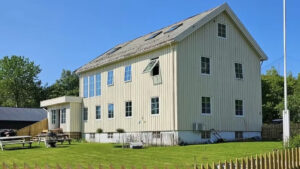
Doktorgården on Lurøya
A historic and charming place to stay in the heart of the Helgeland archipelago, with views of mountains, sea, and a vibrant island community. Doktorgården on Lurøya is a welcoming choice for anyone wanting to experience the Helgeland coast up close — whether travelling solo, as a couple, with family, or with friends.

Tampen Café on Kvarøy
At the edge of the pier on Indre Kvarøy, you’ll find the bustling life at Tampen Café—a surprisingly urban lunch spot in the midst of an exciting, small coastal community.


